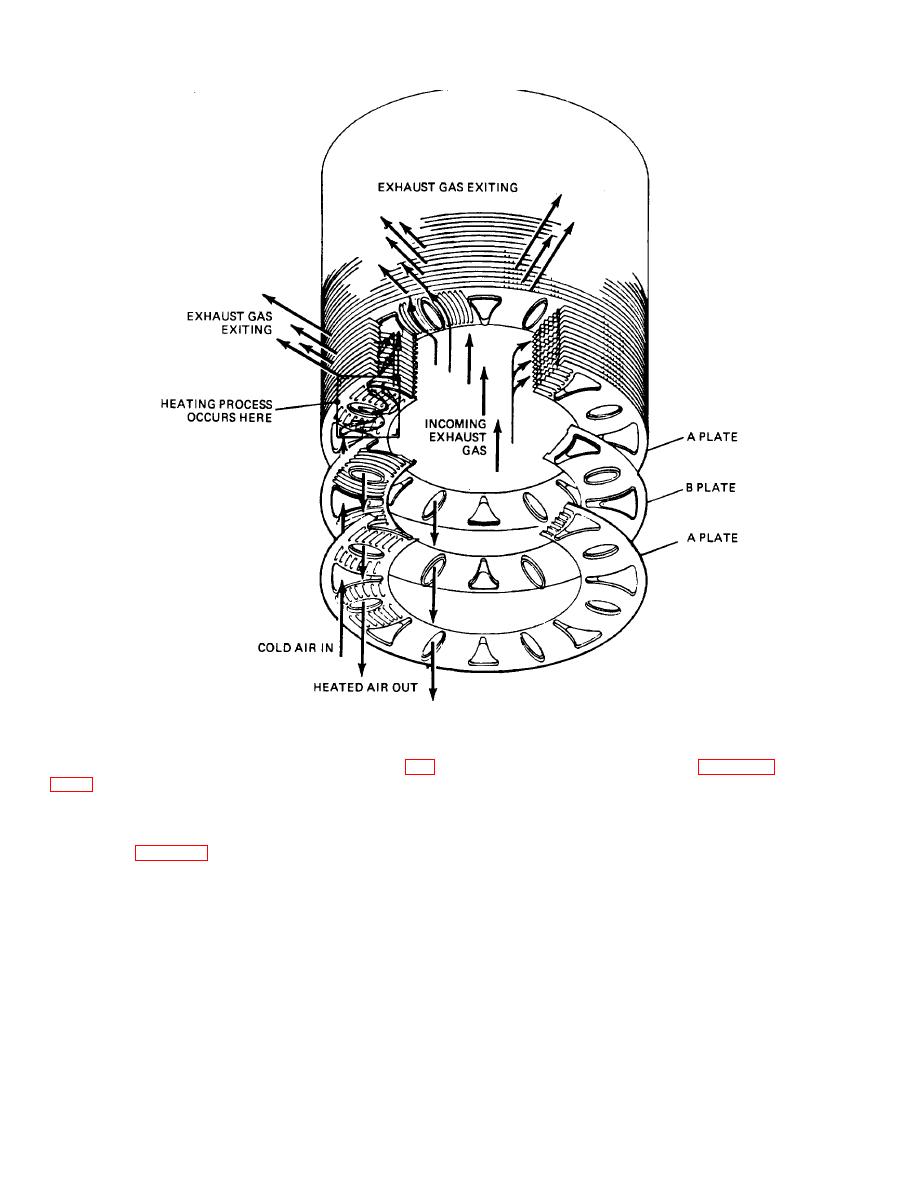
| Tweet |

Custom Search
|
|

|
||
 TM 9-8000
Figure 10-10. Typical Recouperator
blade at an angle respective to the approach angle (fig.
impulse and reaction design (fig. 10-16). The larger
circumference of the assembly at the ends of the turbine
blades requires the tips to travel at a faster rate of speed
(2) Reaction. The reaction turbine operates on
than the roots to obtain the same degree of rotation. The
the differential pressure principle much like the wing of
impulse-reaction type blade uses this concept to equalize
an airplane (fig. 10-15). As the gases enter a converging
the velocities of the gases exiting the root and tip of the
passageway on the first-stage rotor, an increase in
turbine wheel. This type is designed so that the base of
velocity and a decrease in pressure is experienced. The
the blade is an impulse design and the tip is a reaction
result is a rotation of the turbine wheel in the direction of
design. This provides an equal pressure distribution
low pressure. The reaction turbine wheel, therefore,
across the blade and, therefore, an efficient turbine
does not require relatively high entrance velocities as
blade. The impulse-reaction turbine blade is used
does the impulse turbine.
almost exclusively in modern turboshaft engines.
(3) Impulse-Reaction. The impulse-reaction
c. Construction. Turbines operate at speeds
turbine blade is a combination of both the
ranging from approximately 8000 to 60,000 rpm,
TA233512
10-11
|
||
 |
||